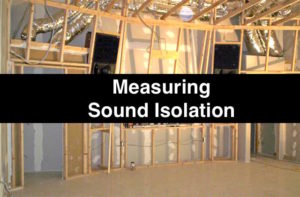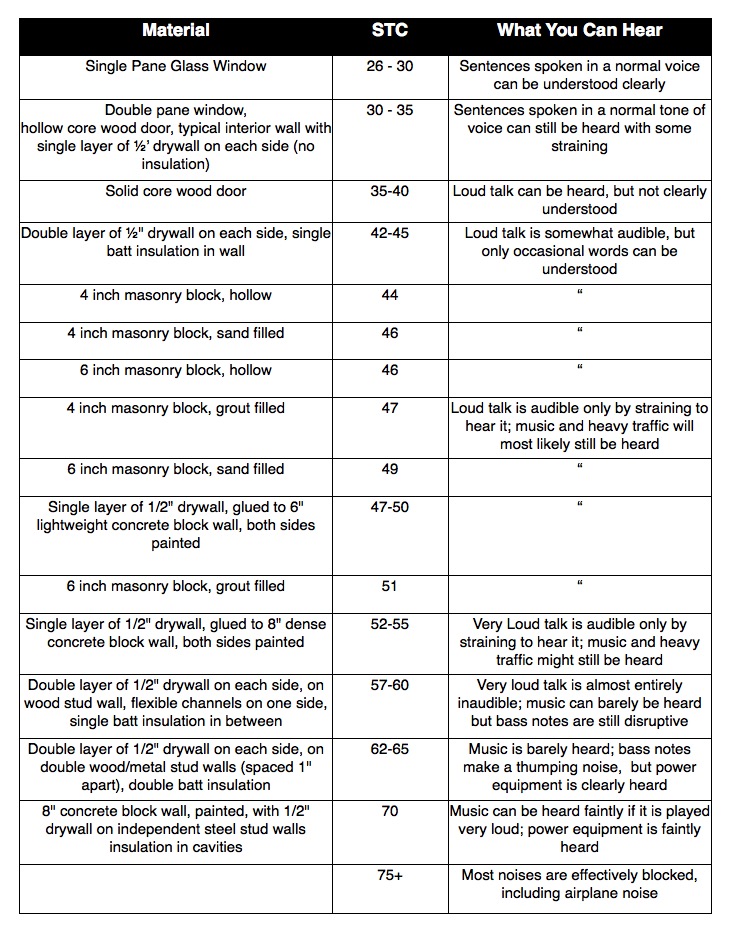- in Book Excerpt , Engineering by Bobby Owsinski
Measuring Sound Isolation
 One of the things that many musicians and engineers don’t realize is that there’s a way to actually measure sound isolation, and this excerpt from my Studio Builder’s Handbook (co-written with Dennis Moody) shows a real world comparison between different materials and isolation levels.
One of the things that many musicians and engineers don’t realize is that there’s a way to actually measure sound isolation, and this excerpt from my Studio Builder’s Handbook (co-written with Dennis Moody) shows a real world comparison between different materials and isolation levels.
“Before we get into how sound isolation is accomplished, we need to take a small detour into the world of sound transmission measurement to understand why some techniques work better than others.
All materials have what’s known as an STC rating, which stands for Sound Transmission Class and is the measurement of a material or a partition’s ability to block sound over a range of 16 different frequencies from 125Hz to 4kHz (see Figure 4.1 for some examples). The higher the STC rating, the more isolation it provides at certain frequencies.

It should be noted that there is no single material that will block all frequencies, and that STC measurements only go down to 125Hz. Frequencies below 125Hz (the ones that usually cause the problems with neighbors) are the most difficult to block, while the higher ones past 1kHz are the easiest. That means that STC measurements aren’t the best for determining isolation because they assume that there will be equal energy dispersion and don’t consider low frequencies. To make matters worse, STC measurements sometimes vary widely from testing facility to testing facility.
That being said, STC has been around since 1961 and it’s the standard measurement that laws have been written around, so even though a few new measurement techniques have been designed (the one called MTC, or music transmission class is the most promising), there’s little support in the design industry for it’s adoption. That means that we’re stuck with using STC. The good news is that humans just don’t hear that well at low frequencies so a wall with a high STC usually attenuates the low frequencies enough to provide adequate isolation (providing other factors in transmission are taken care of, like we’ll see later in the chapter).”
You can read more from The Studio Builder’s Handbook and my other books on the excerpt section of bobbyowsinski.com.
